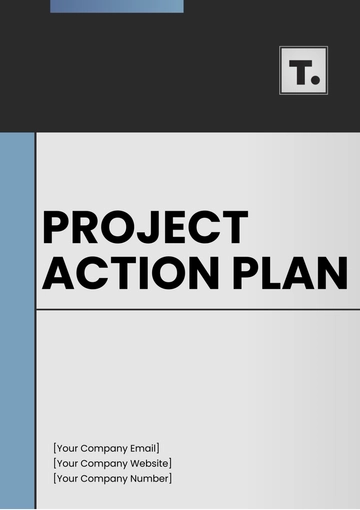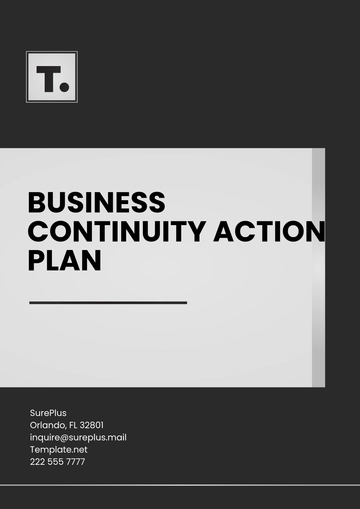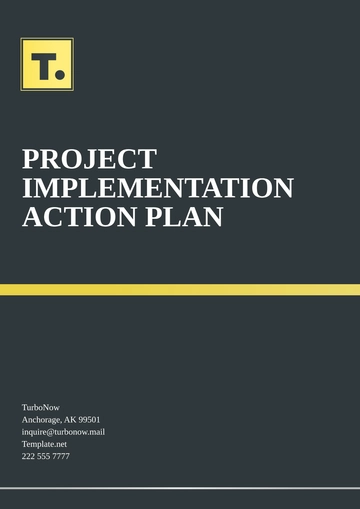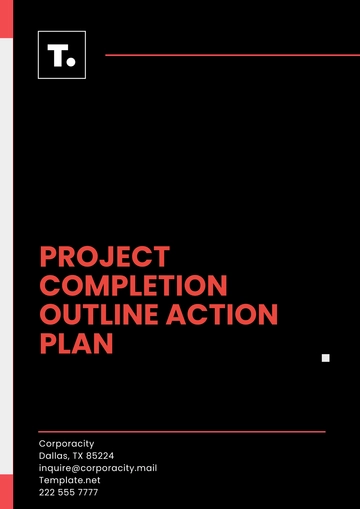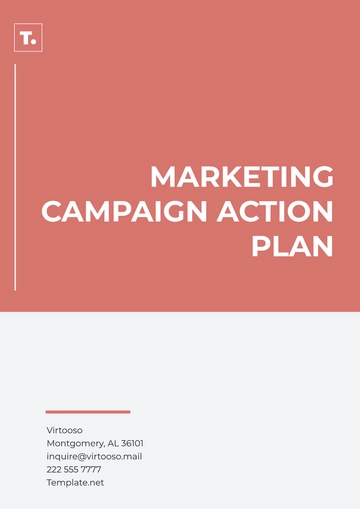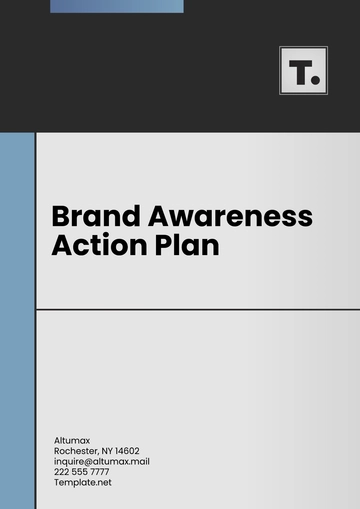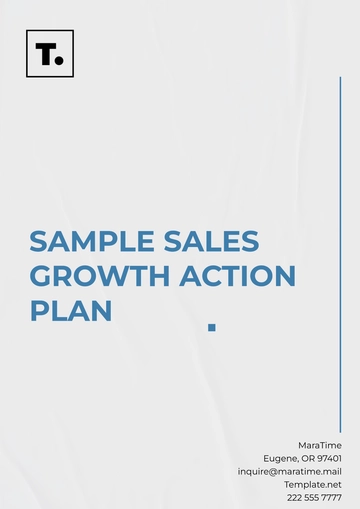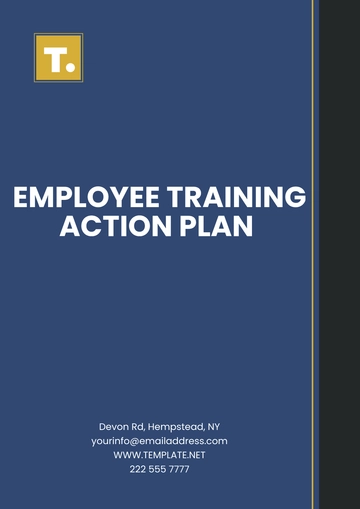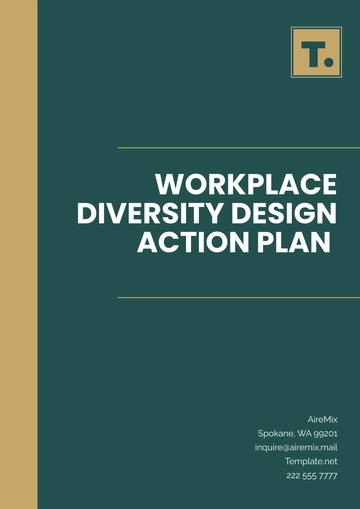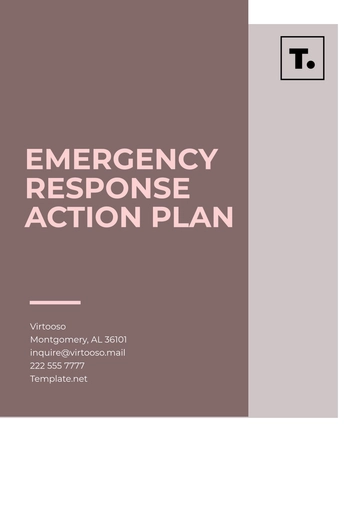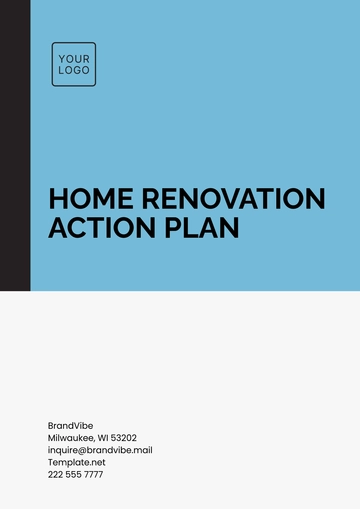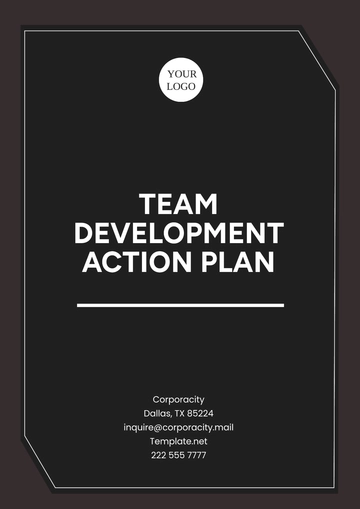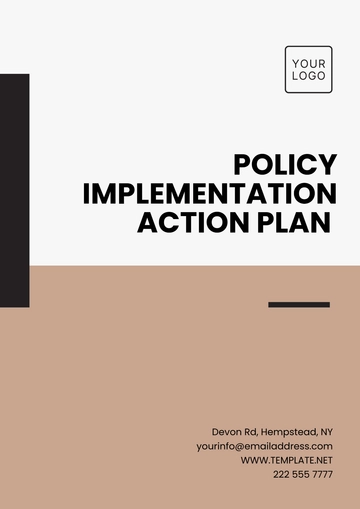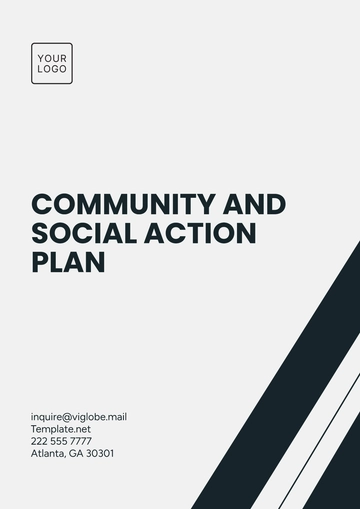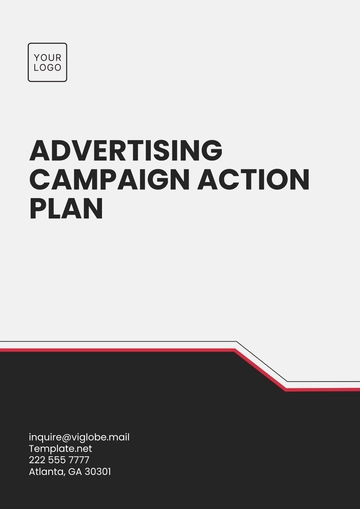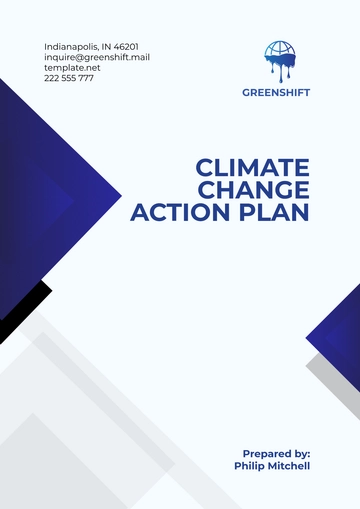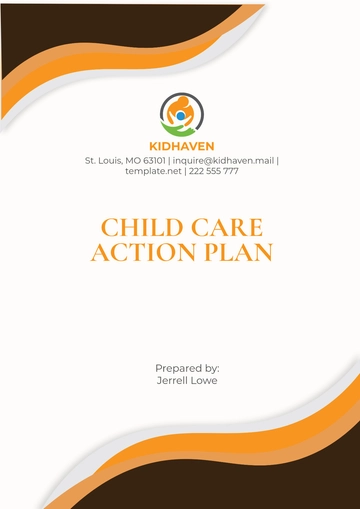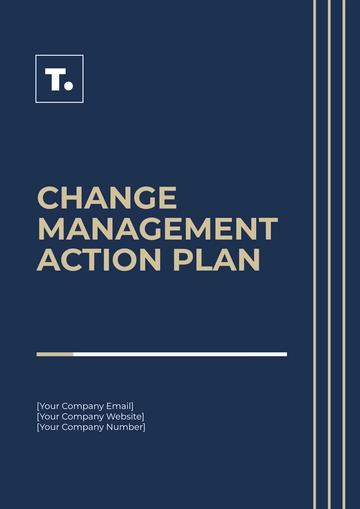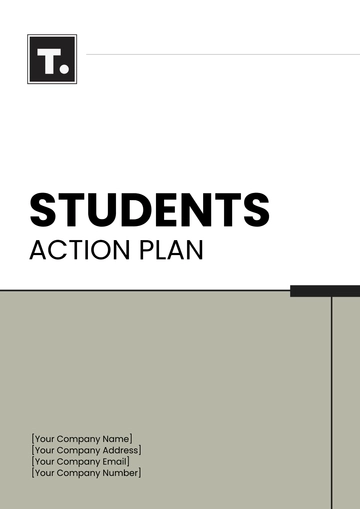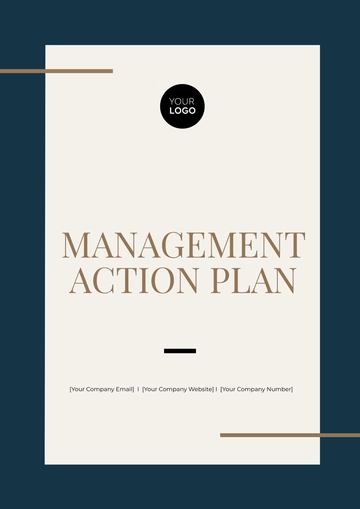Free Travel Agency Action Plan
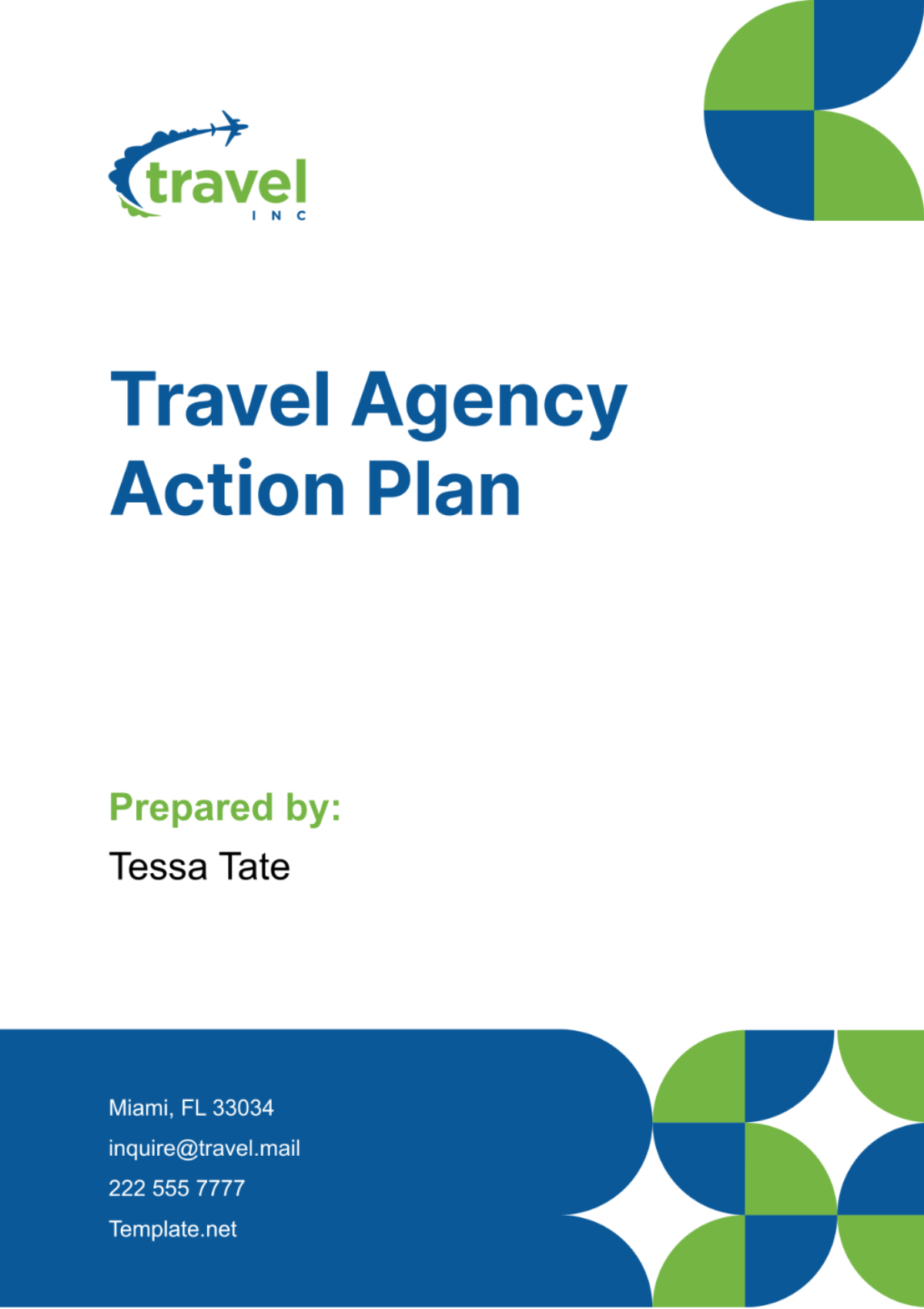
I. Introduction
A. Overview of the Travel Agency
[Your Company Name] is a leading provider of personalized travel experiences, specializing in luxury vacations, adventure tours, and corporate travel solutions. With over a decade of industry experience, we have built a reputation for excellence in customer service and expertise in crafting unforgettable travel itineraries.
B. Purpose of the Action Plan
The purpose of this Action Plan is to outline the strategies and initiatives that [Your Company Name] will undertake to achieve its business objectives for the upcoming year. By identifying market trends, targeting the right audience, and implementing effective marketing and operational strategies, we aim to enhance our competitive position and drive sustainable growth.
C. Scope and Objectives
Increase sales revenue by 15% within the next fiscal year.
Expand our customer base by targeting new market segments and geographic regions.
Enhance operational efficiency to improve customer satisfaction and streamline internal processes.
II. Market Analysis
A. Overview of the Travel Industry
The global travel industry is experiencing rapid growth, driven by increasing disposable incomes, changing consumer preferences, and technological advancements. However, the industry also faces challenges such as fluctuating fuel prices, geopolitical tensions, and regulatory changes.
B. Current Market Trends and Challenges
Rising demand for experiential travel and authentic cultural experiences.
Growing popularity of sustainable tourism and eco-friendly accommodations.
Challenges include intense competition, price sensitivity among consumers, and disruptions caused by events such as natural disasters or pandemics.
C. Competitor Analysis
Competitors in the travel industry include traditional travel agencies, online travel agencies (OTAs), tour operators, and travel aggregators. Key competitors include ABC Travel Services, DEF Tours, and GHI Adventures.
D. Identification of Opportunities
Expansion into emerging markets such as Asia-Pacific and Latin America.
Collaboration with local suppliers and destination management companies to offer unique travel experiences.
Leveraging technology to enhance the booking process and personalize customer interactions.
III. Target Audience
A. Demographic Profile of Target Customers
Our target customers are affluent travelers aged 25-55, primarily professionals, executives, and entrepreneurs with high discretionary income. They seek luxury accommodations, personalized experiences, and seamless travel arrangements that cater to their discerning tastes and preferences.
B. Customer Preferences and Behavior Patterns
Our target audience exhibits a strong preference for personalized travel experiences tailored to their interests and preferences. They rely heavily on online platforms and social media channels to research destinations, compare options, and make travel bookings. Furthermore, they prioritize convenience, reliability, and exceptional customer service when selecting a travel provider.
C. Segmentation Strategies
To effectively target our diverse customer base, we employ segmentation strategies that cater to different travel preferences and needs. Segments include leisure travelers seeking relaxation and rejuvenation, business travelers requiring efficient and flexible arrangements, honeymooners seeking romantic getaways, and adventure seekers craving thrilling experiences. By tailoring our marketing messages and promotional offers to each segment, we ensure relevance and resonance with our target audience.
IV. Marketing Strategies
A. Online Marketing
Website Optimization: We prioritize enhancing user experience and optimizing our website content for search engines to improve organic visibility and drive traffic. By implementing responsive design, clear navigation, and engaging visuals, we aim to create a seamless browsing experience for our online visitors.
Search Engine Optimization (SEO): Through comprehensive keyword research and strategic content optimization, we aim to increase our website's visibility and ranking on search engine results pages (SERPs). By consistently producing high-quality, relevant content and earning authoritative backlinks, we seek to establish our website as a trusted resource in the travel industry.
Social Media Marketing: Leveraging platforms such as Instagram, Facebook, and LinkedIn, we engage with our target audience through compelling content, interactive posts, and targeted advertising campaigns. By fostering meaningful connections and encouraging user-generated content, we aim to amplify brand awareness, drive website traffic, and generate leads.
B. Offline Marketing
Traditional Advertising: We utilize a mix of print ads, radio spots, and outdoor billboards to reach a broader audience and increase brand visibility. By strategically placing advertisements in high-traffic areas and relevant publications, we ensure maximum exposure and recall among our target demographic.
Events and Sponsorships: Through strategic partnerships and sponsorships of local events, trade shows, and community festivals, we enhance our brand presence and engage directly with potential customers. By participating in relevant industry gatherings and consumer exhibitions, we showcase our expertise, build credibility, and forge valuable connections with prospective clients.
C. Content Marketing
Blogging: Our blog serves as a valuable resource for travelers, featuring informative articles, destination guides, and travel tips. By addressing common questions, concerns, and interests of our target audience, we establish authority, build trust, and drive organic traffic to our website.
Email Marketing: Through personalized email newsletters and targeted promotional offers, we nurture leads, foster customer loyalty, and drive conversions. By segmenting our email list based on customer preferences and behaviors, we deliver relevant content and incentives that resonate with recipients, leading to increased engagement and repeat bookings.
V. Sales Tactics
A. Special Deals and Promotions
We regularly offer special deals, discounts, and promotional packages to incentivize bookings and drive sales. By strategically timing promotions to coincide with peak travel seasons, holidays, and special events, we capitalize on consumer demand and encourage conversion.
B. Cross-selling and Upselling Strategies
Our sales team is trained to identify opportunities for cross-selling and upselling additional products or services to maximize revenue per booking. By offering complementary add-ons such as travel insurance, airport transfers, and excursion packages, we enhance the overall value proposition for our customers while increasing profitability.
C. Customer Relationship Management (CRM)
Utilizing advanced CRM software, we maintain comprehensive profiles of our customers, including their preferences, purchase history, and communication preferences. By leveraging this data to personalize interactions, anticipate needs, and provide tailored recommendations, we foster long-term relationships and drive repeat business.
D. Sales Training and Development
Continuous training and development programs are provided to our sales team to enhance their product knowledge, sales techniques, and customer service skills. By equipping them with the tools and resources they need to succeed, we empower our sales staff to effectively engage with customers, overcome objections, and close deals with confidence.
VI. Operational Plans
A. Enhancing Customer Experience
We prioritize enhancing the customer experience by streamlining booking processes and implementing user-friendly interfaces across our platforms. By offering intuitive navigation, clear communication channels, and responsive customer support, we ensure a seamless and enjoyable booking experience for our clients.
Additionally, we invest in continuous improvement initiatives aimed at addressing customer feedback and resolving pain points. By actively soliciting feedback through surveys, reviews, and direct communication channels, we demonstrate our commitment to listening to our customers and making necessary improvements to exceed their expectations.
B. Operational Efficiency
Our focus on operational efficiency involves optimizing internal processes and leveraging technology to streamline workflow and eliminate bottlenecks. By automating routine tasks, reducing manual errors, and improving resource allocation, we enhance productivity and reduce operational costs.
Furthermore, we prioritize supply chain management and vendor relationships to ensure timely delivery of services and maintain high standards of quality. By partnering with reliable suppliers and negotiating favorable terms, we mitigate risks and enhance the overall efficiency of our operations.
C. Quality Assurance and Compliance
Quality assurance and compliance are paramount in ensuring the safety, security, and satisfaction of our customers. We adhere to industry standards and regulatory requirements, conducting regular audits and assessments to identify areas for improvement and ensure compliance with applicable laws and regulations.
Additionally, we invest in staff training and development programs to promote a culture of excellence and accountability. By empowering our team members with the knowledge and skills necessary to uphold our quality standards, we foster a culture of continuous improvement and customer-centricity.
VII. Technology Integration
A. Online Booking Systems
We leverage advanced online booking systems and reservation platforms to streamline the booking process and enhance the overall user experience. By offering intuitive interfaces, real-time availability, and secure payment options, we empower customers to book their travel arrangements conveniently and efficiently.
Furthermore, we invest in mobile optimization and responsive design to ensure compatibility across devices and enable on-the-go bookings. By embracing emerging technologies such as artificial intelligence and machine learning, we anticipate customer needs and personalize recommendations to enhance the booking experience.
B. Customer Relationship Management (CRM) Software
Our CRM software enables us to centralize customer data, track interactions, and manage relationships effectively. By maintaining comprehensive profiles of our customers and tracking their preferences and behaviors, we can personalize communications, anticipate needs, and tailor offers to enhance customer satisfaction and loyalty.
Additionally, our CRM system provides valuable insights into customer demographics, purchase patterns, and trends, enabling us to make data-driven decisions and optimize our marketing and sales strategies for maximum impact.
C. Data Analytics and Business Intelligence Tools
We leverage data analytics and business intelligence tools to gain actionable insights into market trends, customer behavior, and competitive dynamics. By analyzing key performance indicators (KPIs) and metrics, we identify opportunities for improvement, measure the effectiveness of our strategies, and make informed decisions to drive business growth.
Furthermore, we utilize predictive analytics and forecasting models to anticipate market trends and customer preferences, enabling us to stay ahead of the curve and proactively adapt our strategies to changing market conditions.
VIII. Training and Development
A. Staff Training Programs
Our comprehensive staff training programs are designed to equip team members with the knowledge, skills, and resources necessary to excel in their roles. By providing training modules on product offerings, customer service best practices, and industry trends, we ensure that our staff members are well-prepared to meet the needs of our customers.
Furthermore, we offer ongoing professional development opportunities, including workshops, seminars, and certification programs, to empower our team members to stay updated on the latest industry developments and continuously enhance their skill sets.
B. Skill Development Initiatives
We recognize the importance of fostering a culture of learning and growth within our organization. Through skill development initiatives such as cross-functional training, job rotations, and mentorship programs, we encourage collaboration, knowledge sharing, and career advancement opportunities for our employees.
Additionally, we leverage online learning platforms and resources to provide on-demand training modules and self-paced learning opportunities, enabling our team members to enhance their skills and expertise at their own convenience.
C. Knowledge Sharing Platforms
We facilitate knowledge sharing and collaboration among our team members through dedicated platforms and communication channels. By leveraging intranet portals, team meetings, and digital collaboration tools, we create opportunities for cross-functional collaboration, idea exchange, and collective problem-solving.
Furthermore, we encourage team members to share their expertise and insights through internal blogs, newsletters, and knowledge-sharing sessions, fostering a culture of continuous learning and innovation within our organization.
IX. Financial Projections
A. Revenue Forecast
Based on market analysis and historical performance data, we project a 15% increase in sales revenue for the upcoming fiscal year. This growth forecast is driven by our strategic initiatives to target new market segments, enhance customer engagement, and optimize sales and marketing efforts.
B. Expense Projections
Our expense projections are based on anticipated investments in marketing campaigns, technology upgrades, staff training, and operational enhancements. By allocating resources efficiently and prioritizing high-impact initiatives, we aim to optimize our cost structure while maximizing returns on investment.
C. Budget Allocation for Marketing and Operations
We have allocated a significant portion of our budget towards marketing and promotional activities aimed at increasing brand visibility, generating leads, and driving sales. Additionally, we have earmarked funds for technology upgrades, staff development programs, and operational improvements to support our growth objectives.
X. Monitoring and Evaluation
A. Key Performance Indicators (KPIs)
We have established key performance indicators (KPIs) to measure the success of our action plan and track progress towards our goals. These KPIs include metrics such as sales revenue, customer acquisition and retention rates, website traffic and engagement, and customer satisfaction scores.
B. Regular Performance Reviews
We conduct regular performance reviews and assessments to evaluate the effectiveness of our strategies and initiatives. By analyzing performance data, identifying trends, and benchmarking against industry standards, we gain valuable insights into areas of strength and opportunities for improvement.
C. Feedback Mechanisms for Continuous Improvement
We actively solicit feedback from customers, employees, and stakeholders to identify areas for improvement and drive continuous innovation. By implementing feedback mechanisms such as customer surveys, employee engagement surveys, and suggestion boxes, we demonstrate our commitment to listening to stakeholders and incorporating their input into our decision-making process.
- 100% Customizable, free editor
- Access 1 Million+ Templates, photo’s & graphics
- Download or share as a template
- Click and replace photos, graphics, text, backgrounds
- Resize, crop, AI write & more
- Access advanced editor
Enhance your travel agency's strategy with the Travel Agency Action Plan Template from Template.net. This editable and customizable template offers a comprehensive roadmap for growth, complete with an intuitive AI Editor Tool. Crafted by experts, it empowers you to tailor your plan to your unique needs and seize opportunities in the dynamic travel industry.
